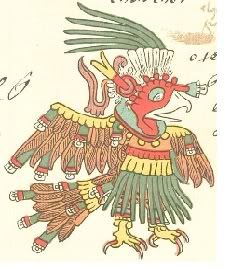Happy Thanksgiving to everyone. Since it’s the first Thanksgiving as the Language Chef, I decided to talk about – what else? – Turkey!
Turkeys are native to North America and have been an integral part of the diet of native peoples for millennia.
Around the time the Aztecs had discovered the Spanish, they had not only domesticated the “huexolotlin” (turkey) but also had two festivals celebrating the bird’s grandeur. The festivals were most likely payback since the turkey provided the Aztecs with a good source of food. They produced rapidly and bore lots of protein-filled eggs.
The Spanish, instead of using the Aztec word, bestowed the Latin word for “peacock”, “pavo”, upon the newly discovered bird. The turkey must have reminded them of its kingly Spanish cousin, the peacock, which the Spanish call “royal turkey” or “pavo real.”
The Italians decided to look to the French for their word for turkey. Explorers described the turkey as having spotted feather, using the word “tache” meaning “spot” as in stain. The Italian word, “Tacchino” is related to the word “tache.”
The French call this infamous bird “dinde” which has everything to do with where they thought it came from. Jacques Cartier and his cohorts were all trying to get to India which, in French, is Inde, and “from India” is rendered as “d’inde.” When they saw the turkey they called it “Poule d’inde” , “hen from India”, then it was shortened to just dinde.
In German, the words “pute” and “truthenne” both mean turkey with one being a northern German word and the other from the south. I giggle every time I see “pute” because it’s also the French word for “prostitute”.
In Chinese, the word turkey translates as “Fire Chicken” 火鸡 . Compared to the ordinary chicken, the Chinese think a turkey looks like it’s on fire.
In Japanese, 七面鳥 しちめんちょう “shi chi min yo u” means “seven sided bird”or they just use ターキー TA KI , which is katakana, the phonetic short-hand Japanese use for foreign words.
And finally, English! Why is a turkey called a turkey? Have you ever wondered? Well, here’s the reason. A bird called a guinea fowl was first introduced to Europe by way of Turkey ( the country), so when the Europeans saw the turkey in North America, they mistakenly called it “that guinea fowl from Turkey”, later shortened to just turkey.
Happy Thanksgiving!

Robert Aiudi, a.k.a., The Language Chef, has been known to his friends and family as a “language junkie” nearly his entire life. He is fluent in many, conversational in others and can fake it through another large amount of some of the most exotic languages in the world. He has taught and tutored many happy students, and annoyed people over the years by asking “how do you say that?”.
From his young years surrounded by speakers of three different dialects of Italian, to university in France and German and extensive work in Asia, China, Taiwan, Japan, Robert has picked up languages and breathed in the cuisines of many countries. Translating from 27 languages into English, Robert is a repository of anecdotal and factual information about languages of all sorts which adds flavor and depth to the Language Chef.
An expert amateur cook, Robert has worked in Paris in small bistro, made pizzas in Florence, wrangled recipes out of the hands of German grandmothers in the Black Forest, worked in a Chinese restaurant and had ad hoc cooking lessons in restaurants in China, Taiwan and Japan as well as various Chinatowns. Most importantly, Robert, his mom and dad, two grandmothers and lots of aunts from Italy have made culinary magic in their kitchens for generations.










